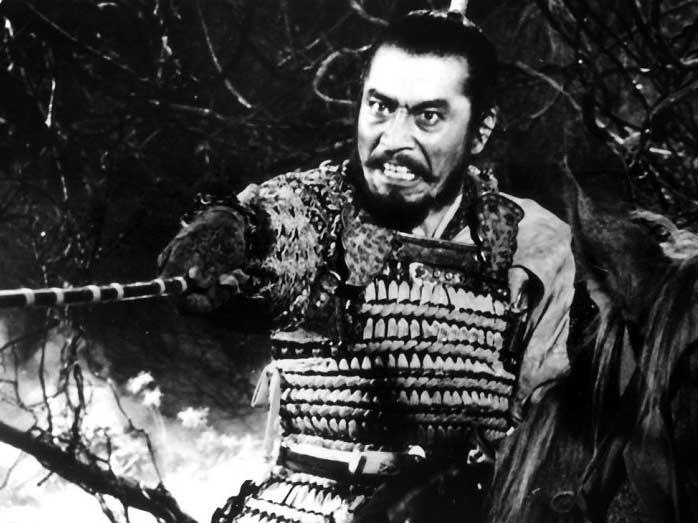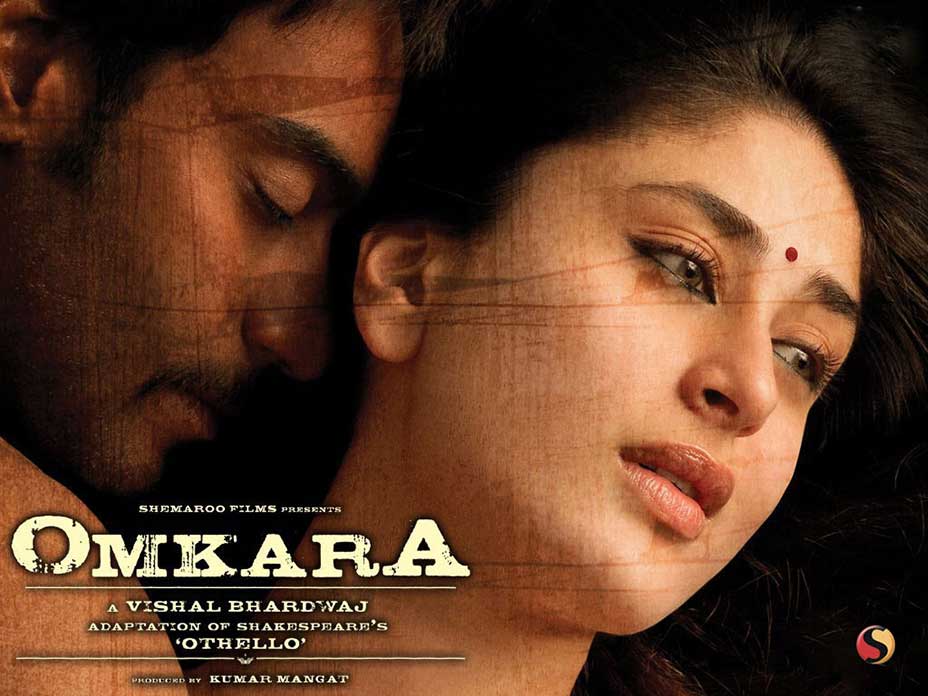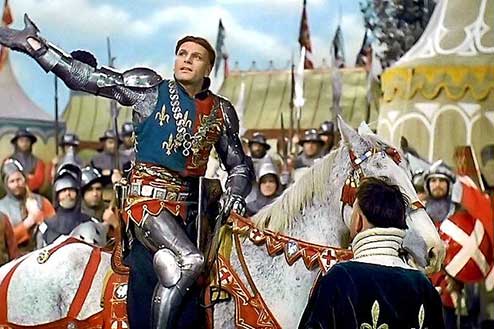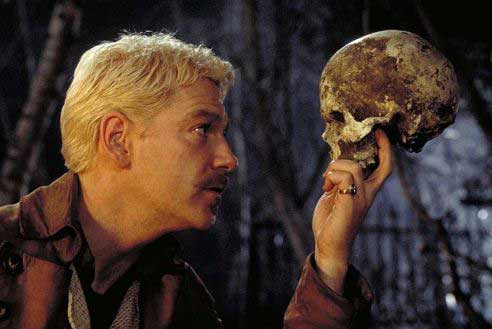[Photo: Tohma via Wikimedia Commons]
The Bard of Avon has written some of the most influential works ever penned. In 2016, 400 years after his death, they continue to play a capital role in our lives.
Shakespeare in other languages
“TaH pagh taHbe’ ” (Klingon for “to be or not to be”)
Translated into over 100 languages (recently examples include Klingon and Esperanto), Shakespeare’s production continues to influence readers and spectators worldwide. Across the centuries, the Bard’s works have been instrumentally used around the world to represent a variety of feelings, such as rebellion against tyranny, or consolation in times of trouble, depending on socio-historical conditions. The universality of his themes translate across time and space, making him an author studied by over 50% of the world’s children today, as shown by a recent British Council study.
With at least two 18th century country leaders directly translating some of his works into Russian and French, it was only a matter of time before Shakespeare would spread around the entire world. The first complete translations, in French and German, seemed to appear around the late 18th century, becoming the basis for other language versions, thus further complicating the matter of authenticity, already affected by classicist modifications (the original texts would eventually be restored and retranslated in the 19th century). With the rise of Romanticism, they spread broadly across the Old Continent.
The first Shakespeare literary society was founded at the end of the 19th century in Weimar, Germany. Around the same time, ‘Julius Caesar’ was being translated into Japanese, with Chinese following a few decades later. In the 1960s, while an imprisoned Nelson Mandela was reading passages from Shakespeare and Tanzania’s first President Julius Nyerere was donating the first translation into Swahili to his nation, Bollywood was at its peak, with many of its films being directly based on the Bard’s work.
The widespread international popularity ultimately led to the World Shakespeare Festival of 2012, in which productions from 50 countries staged his works in 38 languages at the Globe theatre in London. It was just the beginning: in 2014, 450 years after Shakespeare’s birth, a whole host of celebrations took place in the UK and abroad. With 2016 marking the 400th anniversary of his death, a renewed wave of festivals is taking place worldwide over the whole course of the year, with the British Council’s global Shakespeare Lives a notable example.
For more information on Shakespeare’s international influence, we recommend the recent Worlds Elsewhere: Journeys around Shakespeare’s Globe by Andrew Dickson.


A Profound Look into the Human Condition
“The fault, dear Brutus, is not in our stars, but in ourselves, that we are underlings.” (Julius Caesar)
Characters and situations depicted in Shakespeare’s works offer a profound look into problems and themes of our human condition: from Hamlet’s soliloquy to Romeo and Juliet’s balcony scene, they were some of the first attempts at psychology ever made. They provide insights into the human mind and describe a wide range of feelings and reactions to situations in life.
This is all the more striking if we consider the time Shakespeare lived in: an era in which status was paramount, where laws established which colours and fabrics people were allowed to wear according to their class, where people had to abide to defined moral behaviours and where executions and violence were a common sight. The historical setting provides great contrast to the fictional world of Shakespeare’s production, where characters are (to a certain extent) free to explore and express their feelings; all while their stories and realities frame their experiences with a moral backdrop.
Shakespeare’s characters always assume their humanity, even if sometimes they will have to painfully reach this conclusion. They often address directly, bluntly, some of the greatest questions mankind has ever posed itself – they hate, love, cheat and act irrationally, fuelled by their emotions. They are often victims of their own desires and impulses. In all their faceted personalities and contradictions, they feel; for this reason they appear (and appeal) to us as deeply human.
This is where Shakespeare’s modernity and immortality lies and will continue, undoubtedly, to do so for many years to come.
The Modern Theatre: Shakespeare in Film
“We’re not bad people, Mac… just underachievers who have to make up for lost time.” (Pat Mcbeth; Scotland, Pa.)
If you need any more proof that William Shakespeare has always been and will always stay relevant, look no further than the theatre’s most modern median: film. The bard’s plays have been performed in front of the camera since its invention – the Internet Movie Database lists Shakespeare as having a writing credit in 1,140 films. This makes him the most filmed author of all time, in any language. That’s quite a feat for a man who died a good 300 years before feature films had been invented.
Though there are still plenty of Shakespeare fans that continue to enjoy his work on the stage, his transfer onto the silver screen has helped bring in younger, modern audiences. One of the first Shakespearean actors to help successfully adapt the plays to the screen was Sir Laurence Olivier in the 1940s. His three film adaptations, Henry V, Hamlet and Richard III are still considered some of the best because they stay true to Shakespeare’s original words while integrating the visual potential of cinematography. It was the start of a new era in Shakespearean performances.
We cannot mention the modern world of Shakespeare without mentioning Kenneth Branagh. Branagh’s film version of Henry V (1989), which he directed and starred in at 28 years old, had critics calling him the next Olivier. Over his impressive career, he has acted in six film versions of the bard’s work so far. Like Olivier, Branagh’s passion for the bard has kept his film adaptations spot on with the original script – his widely praised Hamlet (1996) is a faithful four hours long. Whatever Shakespeare project Branagh takes on next is sure to be just as brilliant.


Though there are countless films (good and bad) that more or less stay true to the original Elizabethan English of Shakespeare’s plays, there have also been many that put a modern twist on the plots and language. Because the playwright’s themes are so universal, movies like these are often successful – and very creative. A great example is Scotland, Pa. (2001). This modern take on Macbeth is set in 1970s suburban Pennsylvania and tells the story of Joe McBeth, an unambitious hamburger restaurant employee. Sound a bit ridiculous? It isn’t. Lady Macbeth’s bloody hands become a grease burn, the kingdom of Scotland becomes the hamburger restaurant and all the madness stays intact.
Shakespeare plays have even made their way into the plots of teen movies. These tend to be adaptations of the bard’s comedies, which are often considered more relatable to audiences that aren’t as familiar with his work. We aren’t going to try to claim that these are always good movies – but some are worth mentioning. One such movie is 10 Things I Hate About You starring a young Heath Ledger, Julia Stiles and Joseph Gordon-Levitt. It might seem trivial, but bringing the plot of The Taming of the Shrew into the hallways of a typical American high school proved that William Shakespeare is alive and well. His plays, whether told as he penned them or adapted to our modern world, embody the true human experience.
He was not of an age, but for all time! – Ben Jonson














Sorry, the comment form is closed at this time.